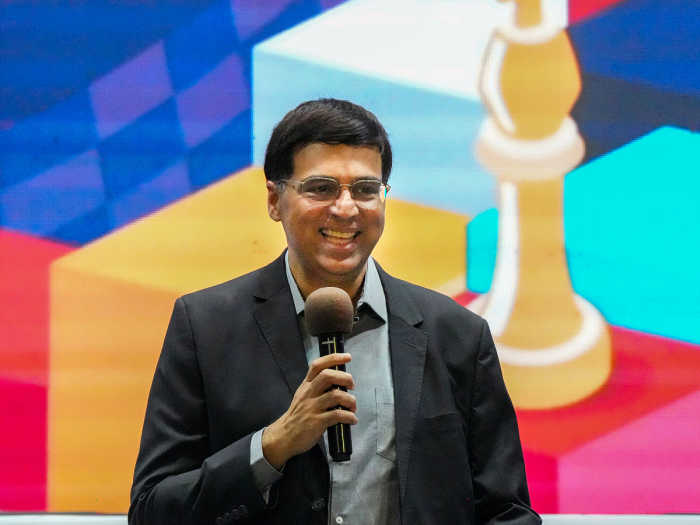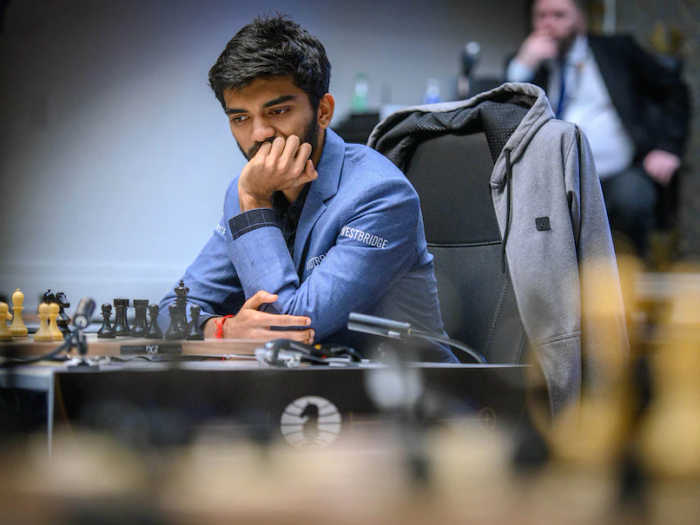Published 17:11 IST, October 18th 2024
How Costly Is Chess In India? The Path To Becoming A Grandmaster For D Gukesh & Vishwanathan Anand
Vishwanathan Anand started a revolution in India but it came a high cost. Here is a closer look at how costly this Journey of becoming a Grand Master is.
Advertisement
While Indian Men and Women’s teams have taken a double gold at Chess Olympi, a historic feat, this journey takes years and deces to bring m where y are today. Here is a closer look at how costly this Journey of becoming a professional and a Grand Master is.
Over past two deces, chess in India has experienced a profound resurgence, largely driven by extraordinary accomplishments of Viswanathan Anand. Anand's triumph in 2000, when he became World Chess Champion, marked a pivotal moment in country's chess history.
Advertisement
His victory not only reignited national interest in game but also served as a powerful inspiration for a new generation of players. By linking ancient roots of chess, which originated as Chaturanga in 6th century India, to its modern-day prominence, Anand effectively bridged gap between past and future of chess in India.

Today, Anand’s legacy is carried forward by a dynamic group of young prodigies, including Arjun Erigaisi, R Praggnanandhaa, and Gukesh, who are making significant waves on global stage. se young talents have risen rapidly through ranks, showcasing India’s growing dominance in world of chess.
Advertisement
As of now, country boasts of 84 Chess Grandmasters, a testament to its thriving chess culture. This surge in talent and interest is also reflected in market value of chess in India, which was estimated at an impressive USD 25.5 billion in 2022. This figure underscores dynamic chess revolution that is currently unfolding across nation.
Advertisement
finances involved in becoming a Grandmaster
However, behind glamor and recognition lies a path fraught with challenges. journey to becoming a professional chess player, particularly a Grandmaster, is often marked by intense struggle and sacrifice along with a high monetary investment.
Cofounder at MGD1, Sreekar Channapraga has broken down finances that are involved in pursuing Chess professionally.
Advertisement
According to Sreekar Channapraga, many of India’s chess Grandmasters began ir training as early as age five, dedicating countless hours to mastering complexities of game. fees for engaging a coach even at that level to teach basics of game ranges from ₹500 to ₹1,500 per hour and if any renowned Grandmasters are involved for coaching, charges can go up ₹2500 to ₹3000 per hour.
As players start chasing Grandmasters norms y need coaching support from some of most renowned names in world chess and fees of se expert coaches can oscillate between USD 150 to USD 200 per session (approx ₹13000 to ₹15000 per session) in which y work with players for about six to eight hours in a day. This cost gets compounded by traveling and lodging cost of coach or player, three to five lakh per international tournament and ₹50,000- ₹1,00,000 nationally, depending on who is traveling to which location.

To become a Grandmaster, every player needs to earn 3 GM norms and an ELO rating of 2500. rules of earning GM norms are not easy as tournament y participate in needs to be of a minimum nine rounds, played over five days and player has to face at least three GMs and players from or nationalities and register a performance rating of 2600 in tournament.
Considering that India did not have a long list of Grandmasters, many Indian players h to travel abro at ir own cost to try and earn GM norms. Though conditions have improved over years and All India Chess Federation is organising many higher rated tournaments in country now, entry fees to se tournaments also create a sizable dent in one’s pocket.
Entry fees for local tournaments can range from ₹1,200 to ₹12,000, while national tournaments are often even more expensive. In some instances, fees for prestigious national and international tournaments can soar to ₹100,000.
In dition to coaching, players must also invest in essential training materials such as books, software, and online courses. se resources are indispensable for staying updated with latest strategies and techniques in chess, but y come at a cost. While books may be priced at a few hundred rupees, comprehensive software packages can cost several thousand rupees. For serious competitors, se materials are not optional but necessary tools for continuous improvement and success.
Competing in tournaments also involves extensive travel, both domestically and internationally. Travel expenses, coupled with accommodation costs, can collectively amount to several lakh rupees. se costs are recurring and, for many players, unavoidable if y wish to compete at higher levels. High-quality chess sets, clocks, and or equipment, which are essential for practice and competition, d to financial strain. cost of such equipment ranges from ₹3,000 to ₹20,000, and investing in reliable and durable gear is crucial for players to perform at ir best.
To put it simply, chess players end up spending a couple of crores to earn right to be called Grandmaster and journey upwards of 2700 points n have to spend yet anor crore or so to perform consistently and be able to compete in prestigious tournaments like Candidates, Olympi and World Championships.
age, “becoming a superstar takes about 10,000 days of hard work,” is particularly true for se players, who spend years honing ir skills. Yet, despite immense dedication and talent required to excel, many professional chess players remain unrecognized, overshowed by athletes from more mainstream sports who enjoy greater media attention and public support.
competition in chess is undeniably fierce. Even most skilled players must constantly strive to stand out in a crowded field where margin between success and obscurity can be razor-thin.
Despite significant financial challenges, many Indian chess players remain undeterred in ir pursuit of excellence. Sponsorships and support from chess federations can help alleviate some of financial strain, but for most players, journey to achieving chess glory is a costly endeavor. passion for game, combined with dedication to overcoming se challenges, continues to drive countless players across country to pursue chess at highest levels.
In conclusion, resurgence of chess in India is not only a testament to country’s rich heritage in game but also to resilience and determination of its players. While path to becoming a professional chess player is undoubtedly challenging, both in terms of fierce competition and significant financial burden, passion for game remains a powerful motivator.
As India continues to produce world-class chess talent, country’s place in global chess community is becoming increasingly prominent. challenges faced by se players, while daunting, only serve to highlight extraordinary commitment required to succeed in this demanding sport. Chess in India is more than just a game; it is a journey of perseverance, passion, and relentless pursuit of excellence.
15:49 IST, October 18th 2024